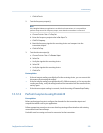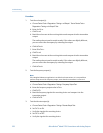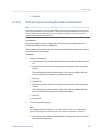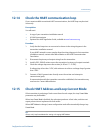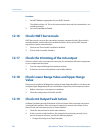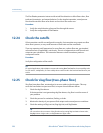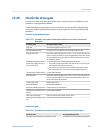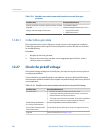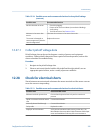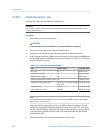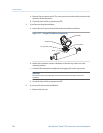
• For the relevant status alarms, change the setting of Alarm Severity to Ignore.
3. If there are no active fault conditions, continue troubleshooting.
12.20 Check Frequency Output Maximum Pulse
Width
If Frequency Output Maximum Pulse Width is set incorrectly, the frequency output may report an
incorrect value.
Verify the configuration of Frequency Output Maximum Pulse Width.
For most applications, the default value for Frequency Output Maximum Pulse Width is
appropriate. This corresponds to a 50% duty cycle.
12.21 Check Frequency Output Scaling Method
If Frequency Output Scaling Method is set incorrectly, the frequency output may report an
incorrect value.
1.
Verify the configuration of Frequency Output Scaling Method.
2. If you changed the setting of Frequency Output Scaling Method, check the settings of all
other frequency output parameters.
12.22 Check Frequency Output Fault Action
The Frequency Output Fault Action controls the behavior of the frequency output if the
transmitter encounters an internal fault condition. If the frequency output is reporting a
constant value, the transmitter may be in a fault condition.
1.
Check the status alarms for active fault conditons.
2. If there are active fault conditions, the transmitter is performing correctly. If you
want to change its behavior, consider the following options:
• Change the setting of Frequency Output Fault Action.
• For the relevant status alarms, change the setting of Alarm Severity to Ignore.
3. If there are no active fault conditions, continue troubleshooting.
12.23 Check Flow Direction
If Flow Direction is set inappropriately for your process, the transmitter may report
unexpected flow values or totals.
Troubleshooting
Configuration and Use Manual 237





